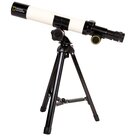Tech Writing: Tools of the Trade
If you’ve ever looked to produce a yearly report, a white paper, a series of tech sheets, or any other project that falls under the broad and rather complicated category of “tech writing,” you’ve probably felt overwhelmed and unsure about where to start. This post can help.
Approaching and efficiently delivering any tech writing project is a big job. However, it’s a job worth learning more about because it can encompass many different projects, can be enormously beneficial across a range of business, and can resonate with a variety of audiences.
In this post, I’ll discuss some of the best approaches to effective and efficient tech writing. In posts to follow, I’ll identify useful tools to aid execution and completion.
Starting and finishing tech writing projects depends on setting scope, communicating progress, soliciting feedback, and submitting or publishing the final work.
Setting a rigorous scope constitutes the first step, and it is key. When you set a scope for a tech writing project, you determine:
- Marketing objectives
- Topic and style
- Content team
- Calendar and schedule
Although tech writing projects are built to suit, with a prefigured topic and audience, it’s still important to explicitly identify every project’s topic and readership.
The identification is necessary because most tech writing projects are produced by a team, often with an outside writer. Ensuring that every team member knows what they’re writing about (and for whom) ensures consistency. It also helps project leads get as specific as possible about their marketing objectives: After all, a tech-based Q&A offered as a download on a business’s website reaches a different audience than the same content published through a trade organization.
Setting scope also requires identifying subject matter experts (SMEs) who can contribute objective and evidence-based material. Designating SMEs before a project begins—and often bringing them into the process of setting scope—can gain their timely and invested participation.
Finally, setting scope requires a calendar and schedule. There’s really no way around the fact that tech writing is an iterative process, and each iteration requires review. Identifying the team and gaining their early buy-in can help manage touchpoint fatigue (aka, “You need me to look at this again?”). Creating a granular schedule can ensure maximum efficiency. When SMEs and others can anticipate the commitment required from the jump, they can better rise to their role.
Setting scope is the most important step in completing tech writing projects. Sharing the scope ensures that objectives are met, that SMEs understand and anticipate their commitment, and that the project moves along as efficiently as possible.

